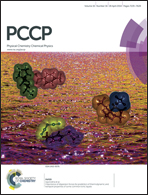Molecular halogen elimination from halogen-containing compounds in the atmosphere
Abstract
Atmospheric halogen chemistry has drawn much attention, because the halogen atom (X) playing a catalytic role may cause severe stratospheric ozone depletion. Atomic X elimination from X-containing hydrocarbons is recognized as the major primary dissociation process upon UV-light irradiation, whereas direct elimination of the X2 product has been seldom discussed or remained a controversial issue. This account is intended to review the detection of X2 primary products using cavity ring-down absorption spectroscopy in the photolysis at 248 nm of a variety of X-containing compounds, focusing on bromomethanes (CH2Br2, CF2Br2, CHBr2Cl, and CHBr3), dibromoethanes (1,1-C2H4Br2 and 1,2-C2H4Br2) and dibromoethylenes (1,1-C2H2Br2 and 1,2-C2H2Br2), diiodomethane (CH2I2), thionyl chloride (SOCl2), and sulfuryl chloride (SO2Cl2), along with a brief discussion on acyl bromides (BrCOCOBr and CH2BrCOBr). The optical spectra, quantum yields, and vibrational population distributions of the X2 fragments have been characterized, especially for Br2 and I2. With the aid of ab initio calculations of potential energies and rate constants, the detailed photodissociation mechanisms may be comprehended. Such studies are fundamentally important to gain insight into the dissociation dynamics and may also practically help to assess the halogen-related environmental variation.


 Please wait while we load your content...
Please wait while we load your content...